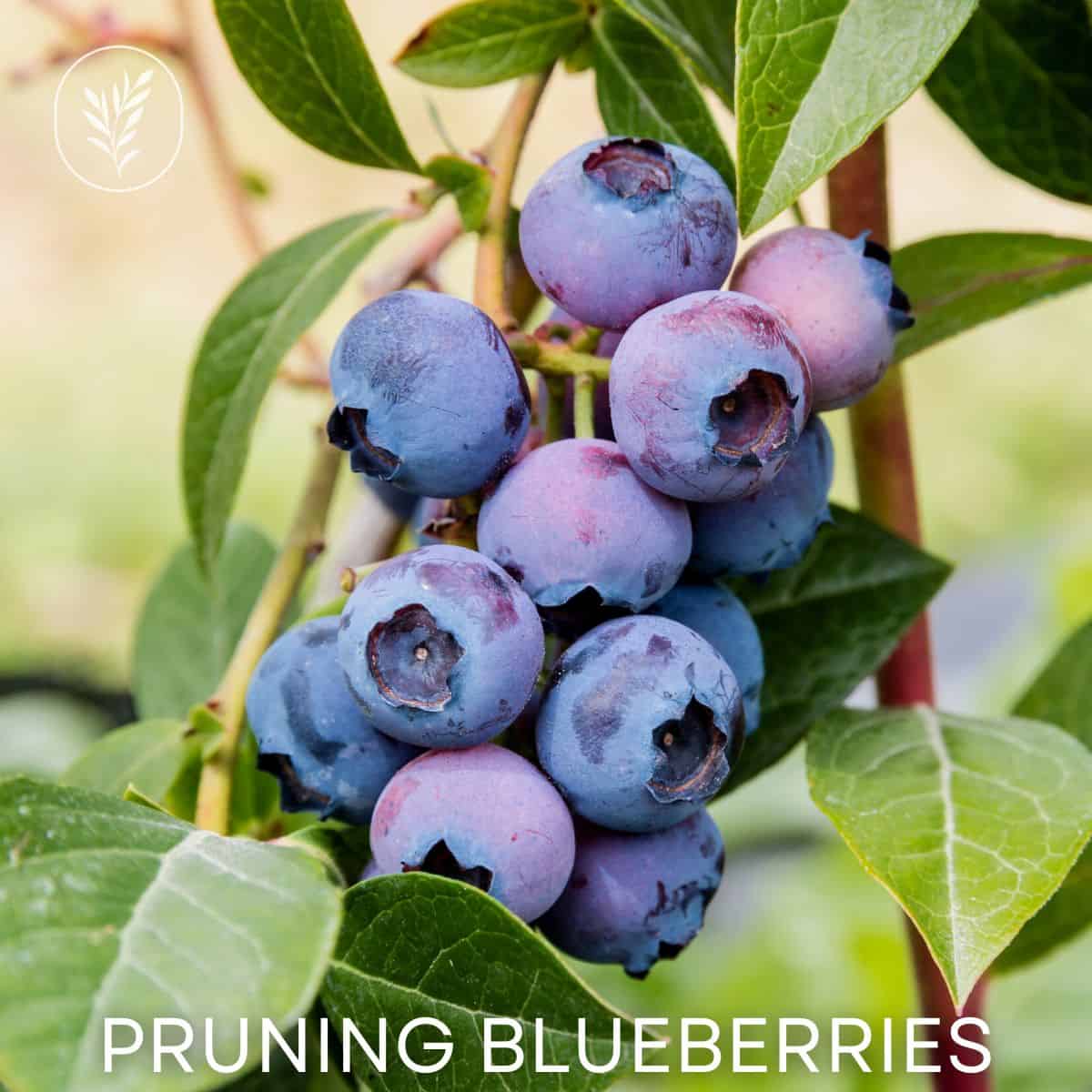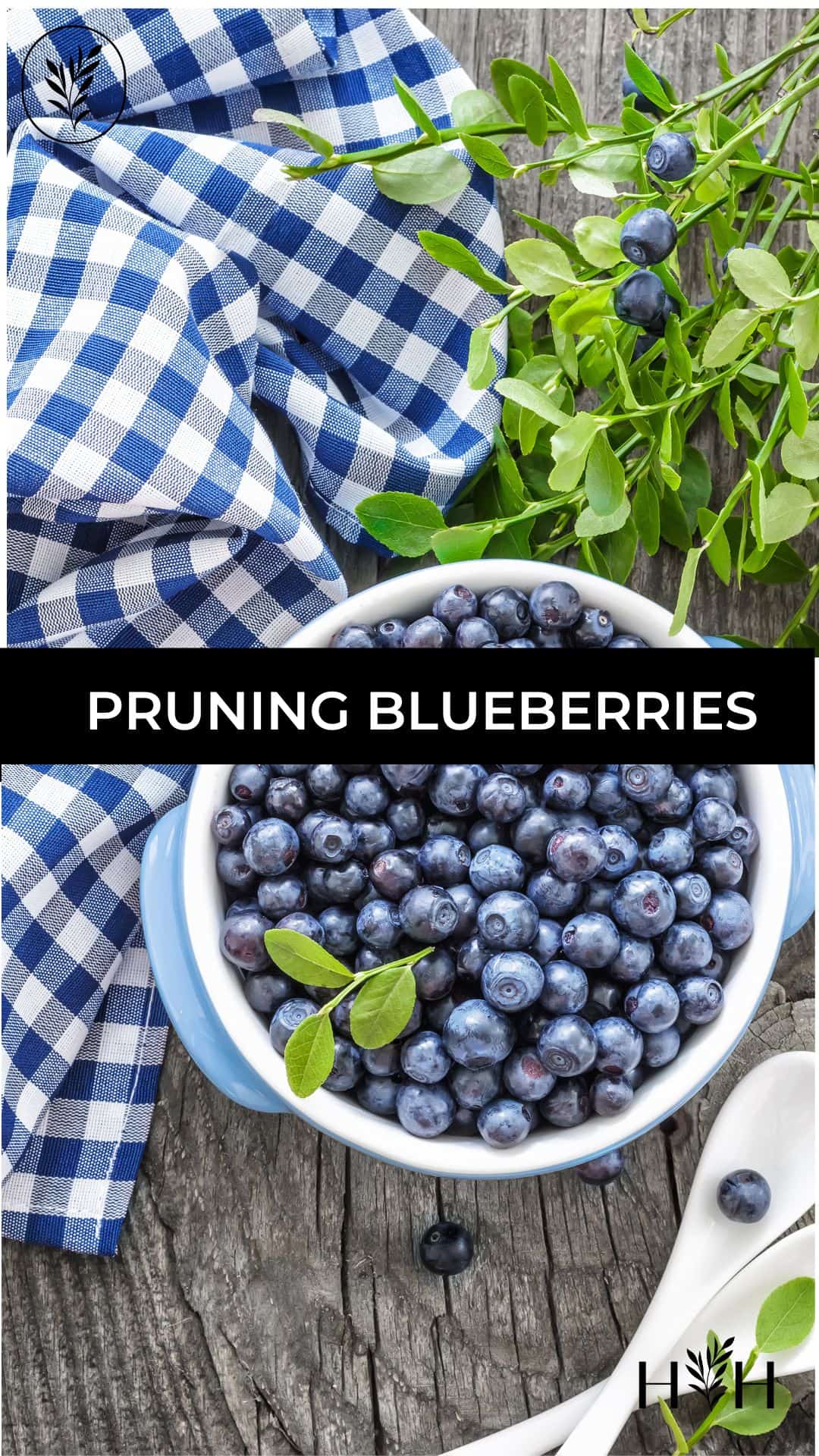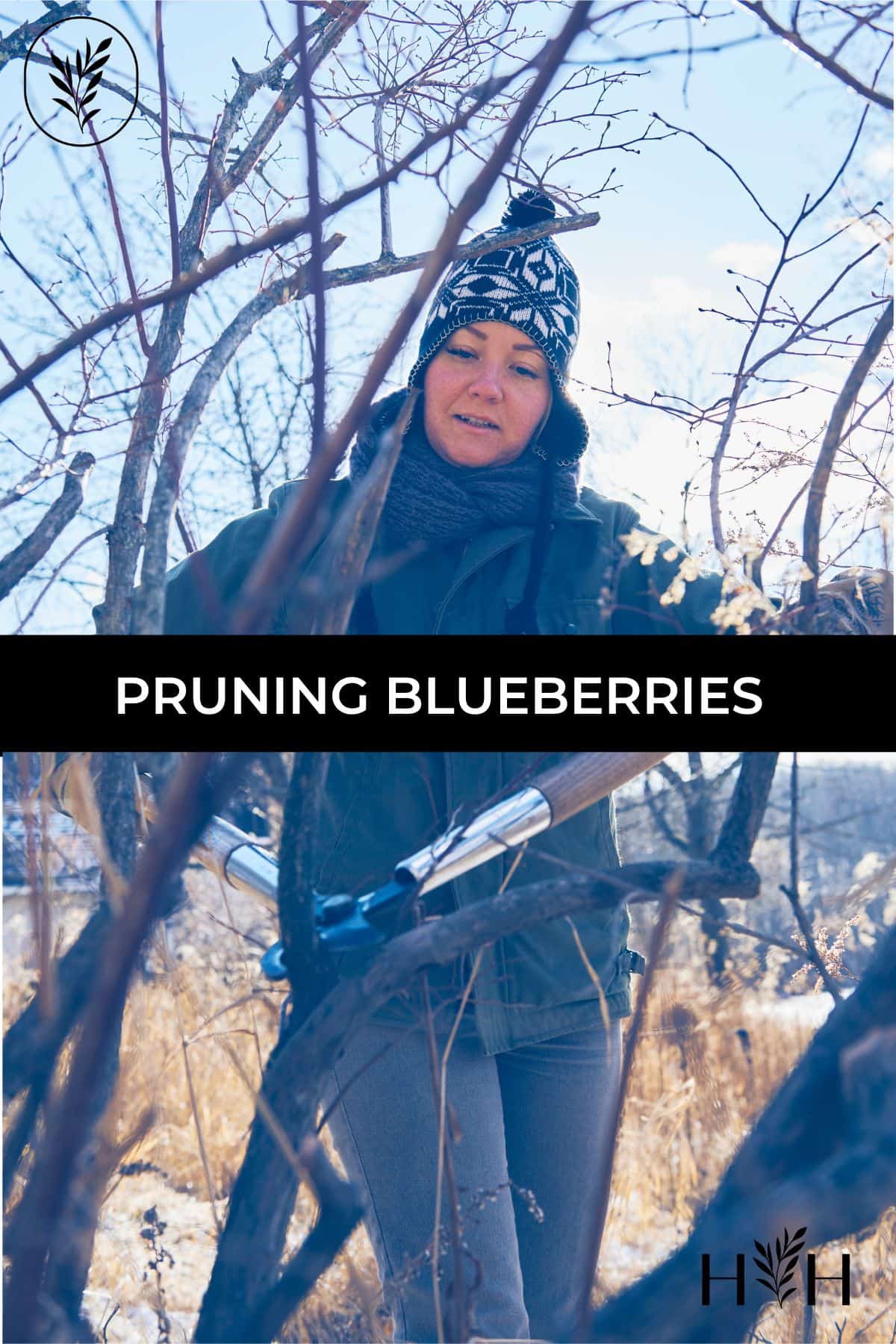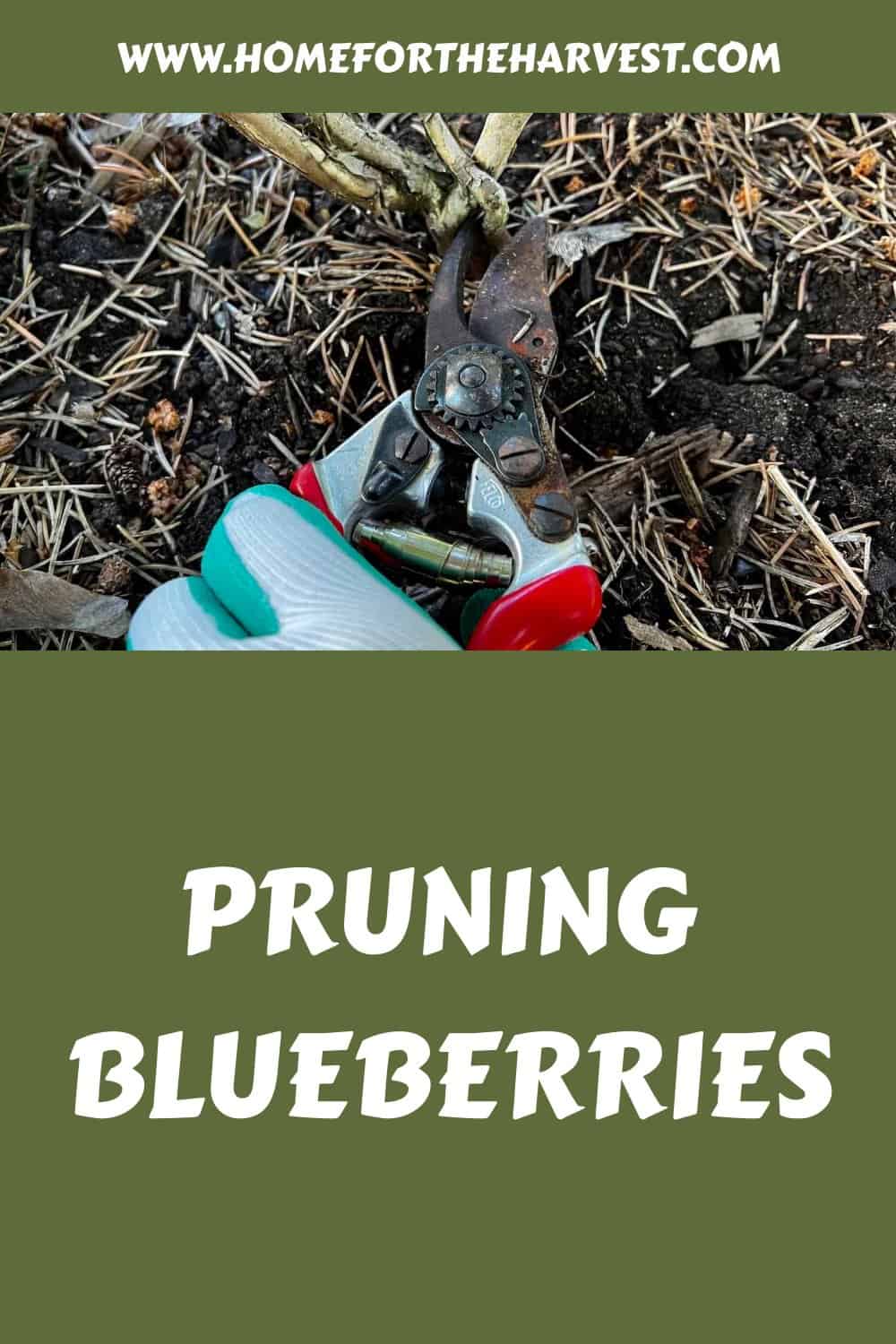Wondering about pruning your blueberries?
Pruning blueberries is not strictly necessary, but it can help your plants thrive. For the first three years after planting, limit pruning to removing dead, damaged, or diseased branches whenever they are observed. Once the bushes have been growing for 4-5 years, begin annual pruning each year in late winter. This dormant annual pruning includes removing old branches, cutting back young stems, and thinning out the base of the shrub.
Read on to learn all about pruning blueberries!
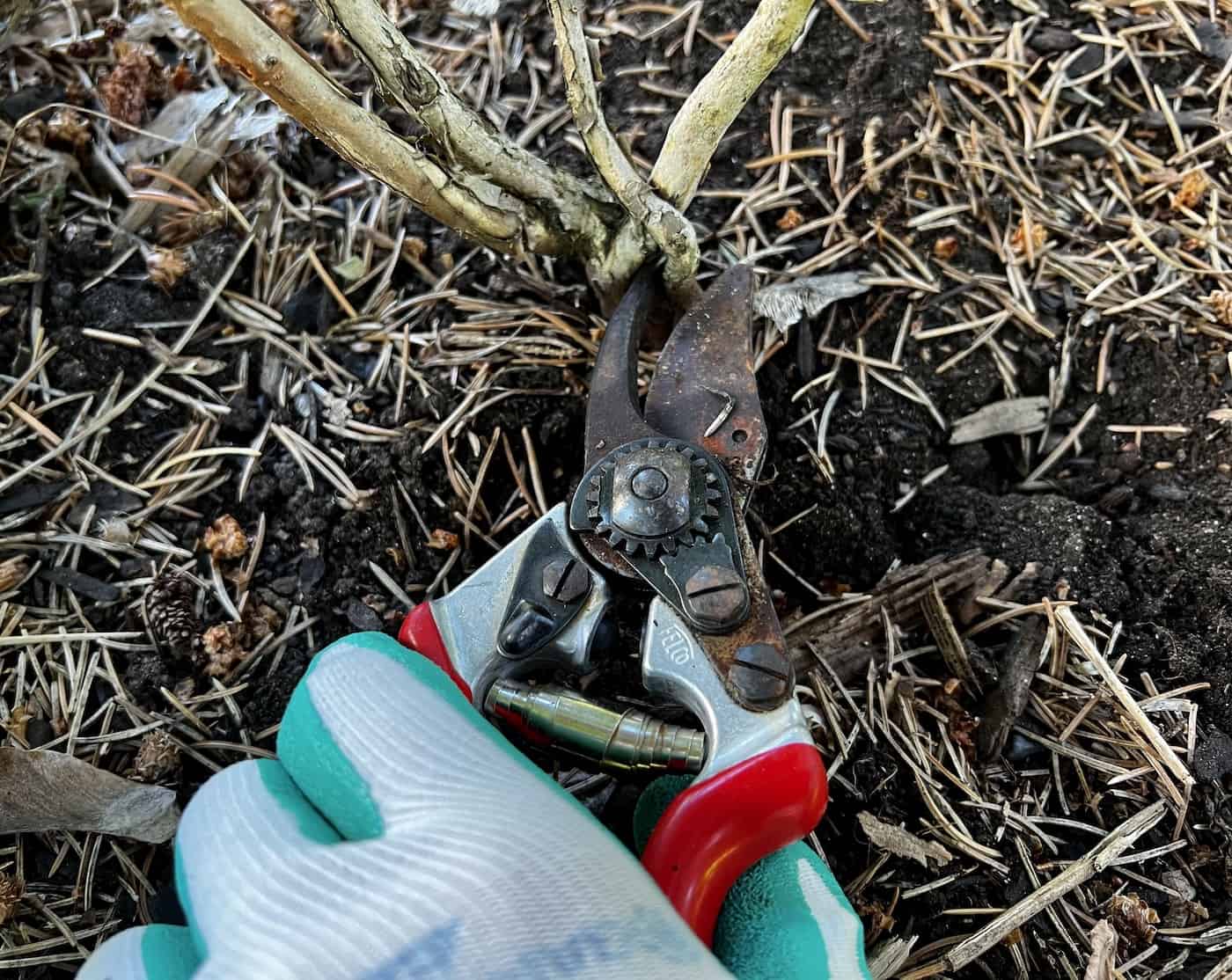
The basics of pruning blueberries
Pruning blueberries is a vital part of their annual care. The pruning process helps to encourage new growth and ensures that the plant produces a good crop of berries. Blueberry bushes are best pruned in late winter or early spring, and the type of bush will dictate how severely it should be pruned.
Blueberry bushes require minimal pruning when compared both to other fruit plants and to many landscaping shrubs. While you do want to remove wood that is dead/damaged/diseased, young blueberry plants don’t need formative shaping. Proper pruning of established shrubs can help maximize fruit production.
Different species of blueberry plants
There are three species of blueberry (Vaccinium spp.) commonly grown:
- Lowbush blueberries (Vaccinium angustifolium)
- Highbush blueberries (Vaccinium corymbosum)
- Rabbiteye blueberries (Vaccinium asheii)
As the name suggests, lowbush blueberries are quite short, reaching only about a foot tall when mature. Highbush blueberries, on the other hand, can grow 5-6 feet tall. Rabbiteye blueberries can tower well over 10 feet high! Most cultivated blueberry varieties are highbush blueberry plants.
Pruning blueberry bushes varies with the type of blueberry plant due to the differing size of the species. Taller blueberry bushes are usually pruned by completely removing a portion of the old stems down to the ground, while lowbush varieties are more commonly cut back to the ground entirely every few years.
The best time to prune blueberries
Blueberry bushes are best pruned in late winter. The shrubs are dormant and have dropped their leaves, making it easy to see the exposed form of the branches. You can generally also observe any winter injury and take the opportunity to remove dead wood to make room for new cane growth.
You can also prune blueberry bushes in early spring. Stems that are dead, damaged, or diseased can be pruned off any time of year and should be removed as soon as observed.
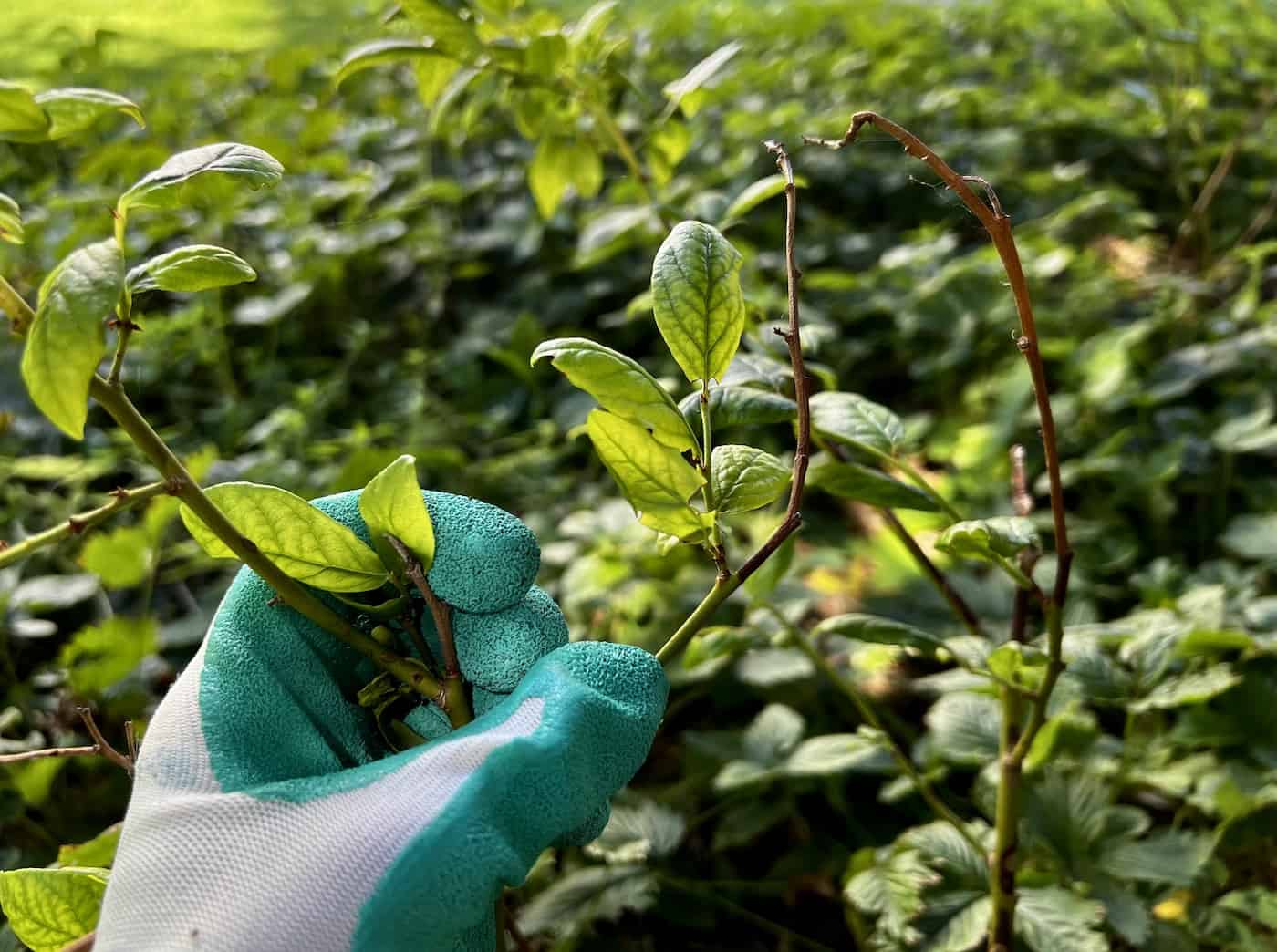
Pruning young blueberry bushes
Young blueberry bushes don’t require much pruning at all. Most blueberry bushes are sold as 1-year-old or 2-year-old plants grown from cuttings. These small plants can be left to their own devices in the garden for about 3 years after planting.
Pruning young plants is limited to trimming off dead branches, removing diseased stems, and cutting back any damaged shoots. Backyard blueberry growers can also pinch off the flowers for the first 2-3 years to encourage the plant towards vegetative growth rather than fruiting.
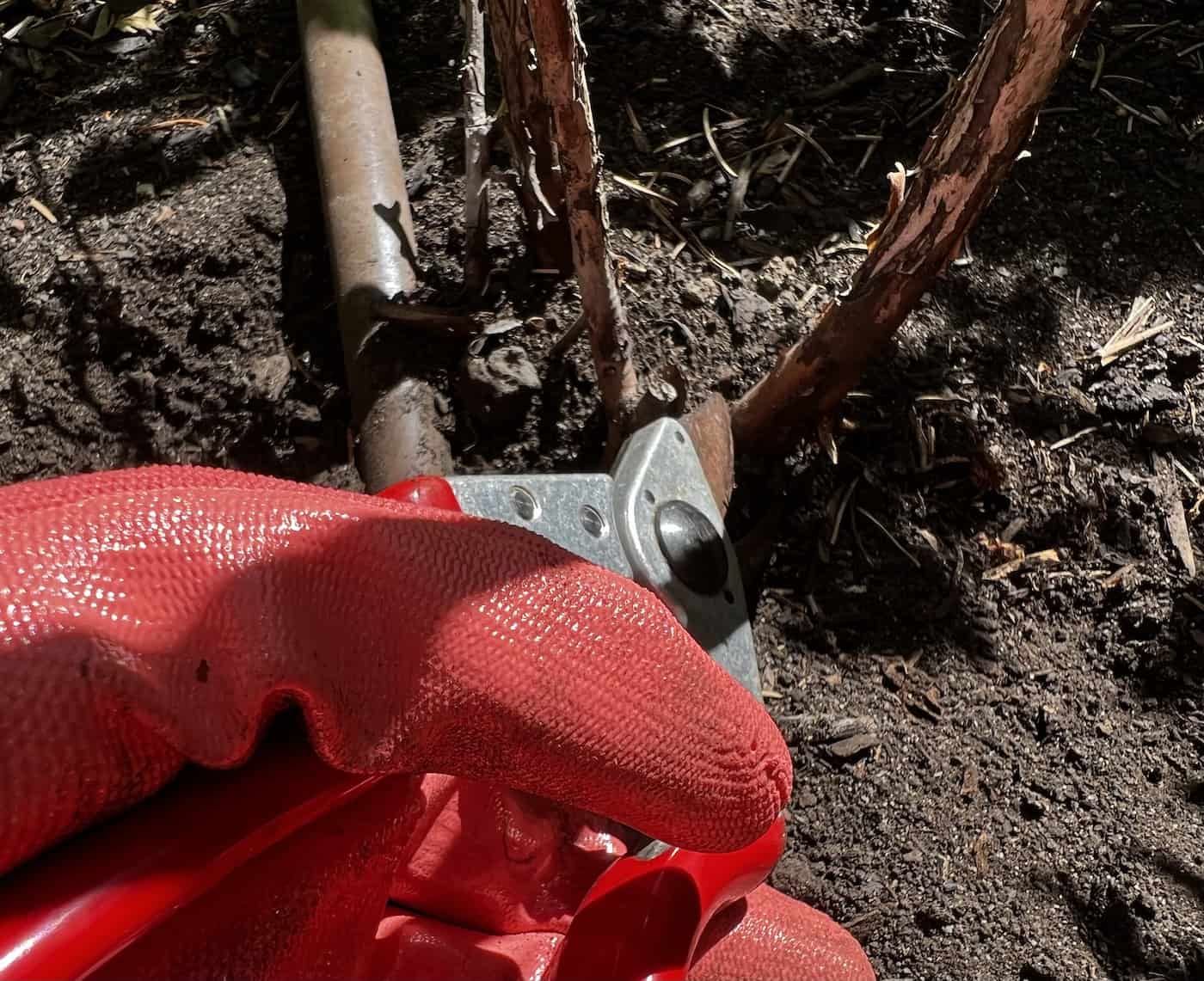
Annual blueberry pruning
Mature blueberry plants are pruned each year in late winter or early spring. Annual pruning helps the plant produce berries by removing the oldest canes and their vegetative buds. This winter pruning process also helps improve air circulation around the base of the shoots, which promotes plant health and makes room for future cane growth.
The main purpose of annual blueberry pruning is to remove unproductive canes right down to the ground. Healthy plants can usually withstand as much pruning as you like, although aggressive pruning can certainly reduce the plant’s ability to produce fruit during the upcoming growing season. Lighter pruning that selectively removes old growth and crossed branches while leaving new canes alone is generally more productive overall.
Pruning highbush blueberries
Most blueberry bushes grown by backyard growers are highbush varieties. These plants are usually between 2-6 feet tall and have long, slender branches. Each stem tends to produce fruitful branches until the stem is about 5-6 years old. Stems that are older than six years can therefore be removed. You can also trim back thin young stems to a strong set of buds.
For full step-by-step instructions, visit the article on how to prune blueberry bushes.
Pruning rabbiteye blueberries
Rabbit eye blueberry bushes are pruned in a similar manner to highbush blueberries. Start by removing any dead/damaged/diseased wood. Then cut off the oldest shoots down right to the ground. Avoid severe pruning as this can lead to the plant putting all its energy into growing new shoots rather than setting fruit.
Pruning lowbush blueberries
Lowbush blueberries are generally pruned severely in comparison to other types. These bushes have underground rhizomes that spread into new soil and send up fresh new shoots. To encourage this, it is common to cut the entire plant back to the ground once every 2-3 years. As with the other types, this annual pruning is typically done in the late winter or very early spring.
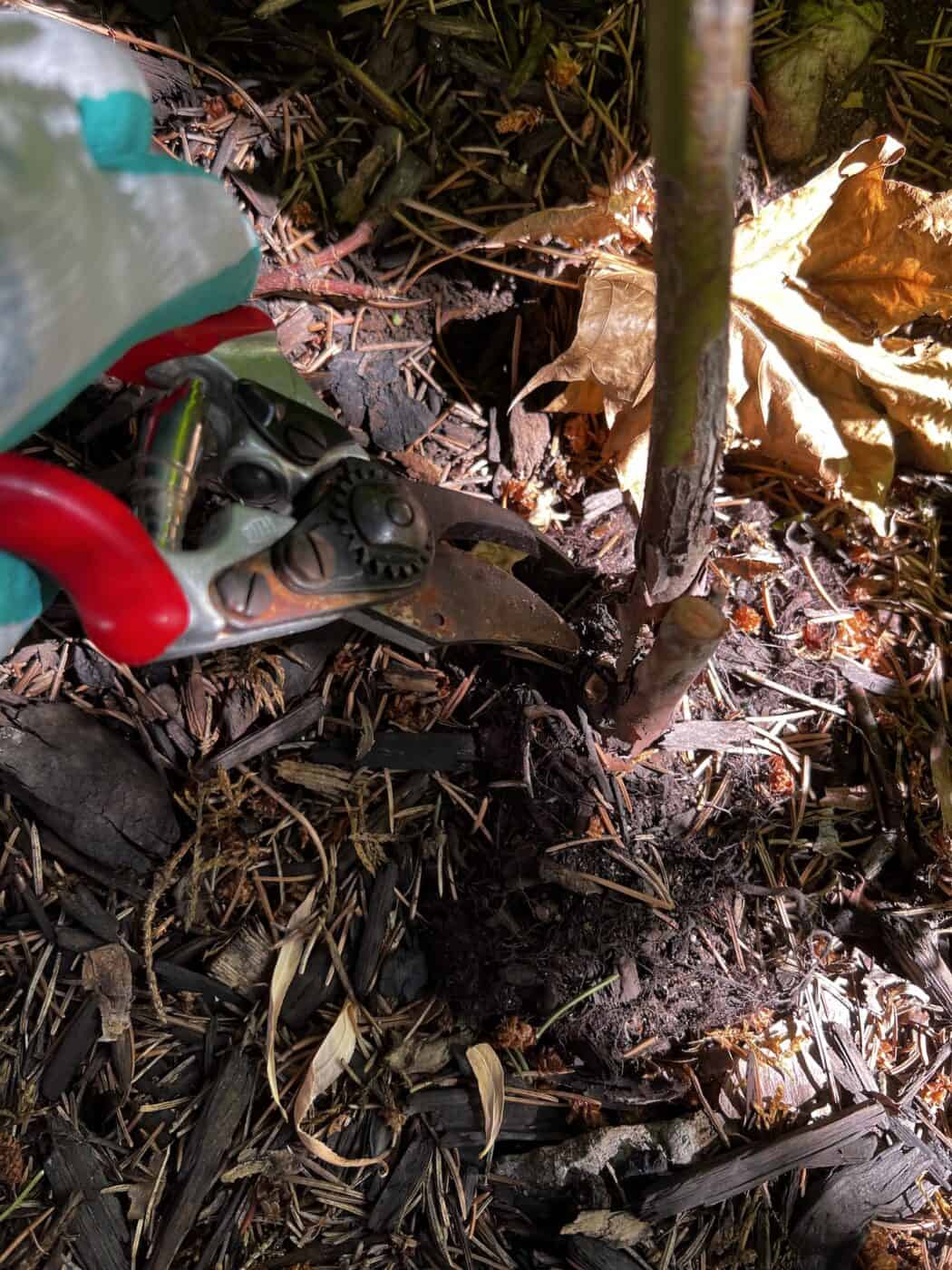
Pruning for maximum fruit production
Pruning is essential for established blueberry plants to produce abundantly. Without pruning, the center of the plant can become crowded with dead wood, crossing branches, and old stems that are no longer productive.
Blueberries grow berries on one-year-old wood, so be conscious of removing too many fruit buds on mature bushes. Each stem coming up from the ground will tend to grow new fruitful branches for about five years after sprouting. Therefore, all stems older than six years are usually removed down to the ground as they are assumed not to be productive anymore.
To maximize fruit production, start by removing all branches that are dead, diseased, or damaged. Then remove any branches that look particularly old and unproductive. If the base of the shrub is crowded, remove a few older stems right back to the ground, especially if they are crossing/rubbing other branches or growing inwards. Lastly, trim off any old twiggy growth.
The remaining young stems coming up from the base of the plant should be free from damage or disease. Look for any floppy weak stems less than 1/4″ thick and cut them back a bit, usually to wherever there is a healthy-looking set of plump buds. Branches with excessive fruit buds can be shortened, so each branch has a maximum of 5 fruit buds.


